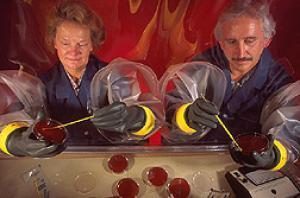
The need to find out energy sources and the development of genetic and microbiology make it likely to find out bacteria or microbes which could be very useful. In this case the bacteria should be able to eat sugar or sludge and it must be team player or electrochemically active. Surviving without oxygen would be a good thing but it is not strictly necessary.According to Mike Cotta, who leads the ARS Fermentation Biotechnology Research Unit, Peoria, Ill., the project with WU arose from a mutual interest in developing sustainable methods of producing energy that could diminish U.S. reliance on crude oil. Here ARS stands for Agricultural Research Service and WU stands for Washington University.
They use microorganisms or yeasts such as ferment grain sugars into fuel ethanol. They are searching for microbes that “eat” biomass sugars (e.g., glucose and xylose from corn stover) and are electrochemically active. This means that they are able to transfer electrons from fuel cell sugars with low costs.
Bacteroides and Shewanella are among bacteria species used to start the process. This study is very important as it could have a huge impact and it could very likely be a nonpolluting way of producing energy from other sources than fossil fuels.
Was this helpful?



